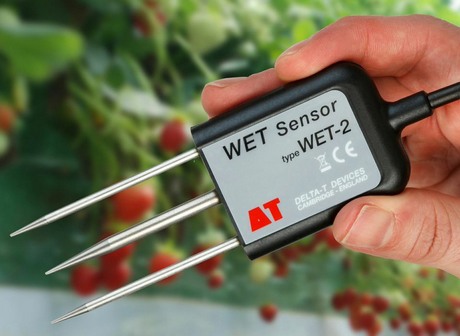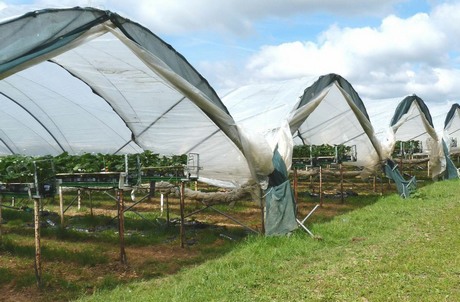The company was one of the first commercial growers to adopt table-top production of strawberries in the late 1990’s. Since 2008, they have been using Delta-T WET Sensors to monitor growing conditions, making thousands of readings a week.

Nick Deppe of Clockhouse Farm. The coir on their farm is from Botanicoir
Nick oversees the WET Sensor usage and explains how and why the device is used: “The WET Sensor shows us what the EC of the coir is, and obviously also the moisture content and the temperature. The system allows you to know what’s going on in real time quickly and easily.”
Nick oversees a team of 7 site managers, each taking at least 60 separate readings a day, resulting in around 500 daily measurements. “They control the irrigation on each site, communicating with each other and striving to keep the optimum levels of moisture. With multiple sites, you need a tool of some description, so you can set goals and get them to hit those targets.”

The WET Sensor
This approach allows Clock House Farm to address any shortcomings at very short notice, “which is absolutely critical with fruit such as raspberries, which can deteriorate within a matter of hours under sub-optimum growing conditions.”
In terms of quality and yield optimisation, Nick believes that the only way in which monitoring could be further improved would be with the use of instruments to measure the coir’s PH. In any case, “the EC is an interesting figure because, unlike moisture, you can’t see it.”

One of the tunnels at Clock House Farm
The immediacy of the data which the WET Sensor provides is what the company most appreciates, not just the excellent accuracy. “In terms of benefits that the WET Sensor provides, it not only gives us the confidence that we have optimal growing conditions at all times, it has also enables us to reduce irrigation levels, eliminating unnecessary water wastage and reducing expensive fertiliser costs.”
 For more information:
For more information:Delta-T Devices
Dominic Cahalin, Marcoms Coordinator
130 Low Rd
Burwell
Cambridge
CB25 0EJ UK
dominic.cahalin@delta-t.co.uk
www.delta-t.co.uk
